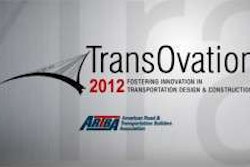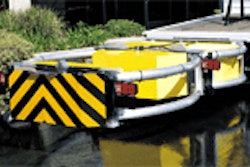“Abnormally dangerous activities” are subject to special legal principles. According to the doctrine of abnormally dangerous activities, some activities, under certain conditions, may be so hazardous they result in strict liability.
Though one who carries on an abnormally dangerous activity does so with the utmost care, they are liable for any injury or damage resulting from the activity to anyone whose person or property they should recognize as likely to be harmed by a mishap. Generally, an activity is deemed abnormally dangerous if it involves a risk of serious harm to others that cannot be eliminated by the exercise of the utmost care, and includes activities such as blasting, the testing of rockets, and the keeping of wild or vicious animals.
“Assumption of the risk” is a different legal doctrine that applies to bar or limit a plaintiff’s recovery. Though most cases in which the doctrine of assumption of risk exists involve recreational sports, the doctrine has been applied to dangerous activities in other situations involving an inherent risk of injury to voluntary participants. In Montana, these two doctrines intersected in a recent blasting case.
[To see the “In Court” section in our digital edition, click here.]
In Patterson Enterprises, Inc. v. Johnson (Feb. 24, 2012), the Montana Supreme Court held that a road contractor and its employees assumed the risk for an excavator that was crushed as part of a blasting operation by its blasting subcontractor. In fall 2006, Patterson was hired to construct a road approximately 20 miles west of Missoula. Since the road was to be constructed in mountainous terrain, a significant amount of blasting was required. Patterson hired Archie Johnson Contracting (AJC) to perform all blasting on the project.
On January 2, 2007, Patterson and AJC entered into an agreement for the blasting, requiring AJC to drill and blast various rock outcroppings. Patterson’s superintendent’s job was to work with AJC’s crews to remove blasted material. AJC was in charge of blasting while Patterson was in charge of excavating.
During the project, Patterson used its equipment to clear or build a flat pad for AJC’s drilling equipment. AJC would place its drilling equipment on the pad, drill holes in the rock, and fill the holes with explosives. Before detonating the explosives, AJC would clear the area. The explosions fractured the rock and allowed Patterson to excavate the blasted material. AJC and Patterson repeated this process as they constructed the road.
On February 26, 2007, AJC detonated explosives along 500 yards of rock. This blast created a rock overhang that caused concern. On February 28, 2007, AJC and the project owners met on site to discuss how to deal with the overhang. One idea was for AJC’s crews to come in from above using ropes and drills so they could safely get to the overhang and bring it down. However, since this would take several days, the owners opposed this idea.
On March 1, 2007, when Patterson’s superintendent arrived for work, he moved his excavator near the overhang and began excavating the blasted rock. AJC’s crew arrived sometime later and checked on the progress. AJC’s driller did not advise or warn the overhang was still dangerous because, according to the driller, Patterson’s superintendent knew it was dangerous. When AJC’s driller stopped by the area more than an hour later, he noticed the superintendent was working directly below the overhang so he signaled for him to exit the excavator. Almost immediately after exiting, an entire section of rock above the excavator collapsed and crushed it. The superintendent was not injured. AJC denied liability for the accident.
On September 11, 2007, Patterson filed suit. AJC denied all charges and counterclaimed for breach of contract and money owed. The case proceeded to a jury trial. The jury returned a verdict that AJC’s blasting caused Patterson’s damages regarding the crushed excavator, but Patterson and its employees assumed the risk of harm. The jury allocated fault 51% to AJC and 49% to Patterson, and awarded damages to Patterson of $50,000. The jury also ruled in favor of AJC’s breach of contract claim and awarded damages to AJC of $19,255.16. Patterson appealed the jury’s verdict regarding assumption of the risk.
The Montana Supreme Court examined the doctrine of assumption of the risk. The court determined that given Patterson’s superintendent’s knowledge of the danger of operating his excavator beneath the rock overhang, he possessed subjective knowledge of the danger the overhang posed. AJC’s personnel expressed concern to the superintendent about the rock overhang that eventually fell on the excavator and told him “it was a very hazardous” condition. Patterson’s superintendent testified that he “also, felt it was very hazardous.” In fact, he testified that placing the excavator “right underneath” the overhang would have been “very dangerous.” As a result, the court upheld the jury’s verdict.
This case illustrates the intersection of the doctrines of abnormally dangerous activities and assumption of the risk. Blasting is an abnormally dangerous activity resulting in strict liability. However, in Patterson, the superintendent’s subjective knowledge of the danger of operating his excavator beneath the rock overhang was enough to apply assumption of the risk. As a result, the blasting subcontractor, AJC, avoided what otherwise could have been a crushing defeat.
Assumption of the risk is a legal doctrine that can be used in a variety of contexts, including blasting and other activities involving an inherent risk of injury to voluntary participants. Its proper application, which varies depending upon the jurisdiction, can result in offsetting, and even negating, plaintiff’s claims.












